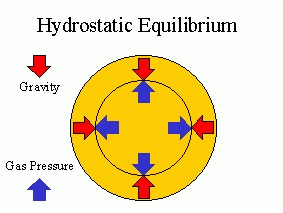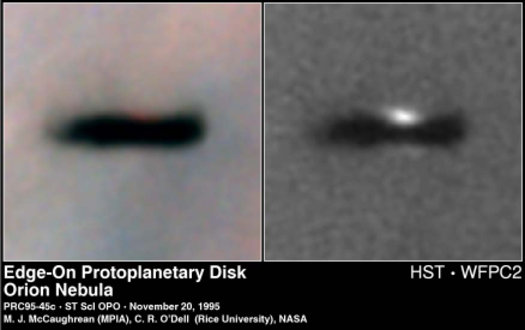The pressure at the center of the star gradually increases until eventually it balances the gravitational force causing the gas cloud to collapse onto the star. This is called hydrostatic equilibrium.

Material stops accreting onto the star, and the remaining dusty material is left surrounding the star in the shape of a disk.
A Hubble Space Telescope image of a protoplanetary disk in the Orion Nebula. We happen to see this disk from the edge, so it blocks most of the light from the star. The two different images come from combinations of different filters on the camera used to take the picture.
One way to study protoplanetary disks is to use water masers, clumps of water molecules in an odd state which makes them amplify radio emission. Here, the VLA (Very Large Array), has glimpsed some water masers in a protoplanetary disc. The left figure shows the size Neptune's orbit would be if it were around this star, and the right figure shows the orbits of all of our Solar System's planets for scale comparison. Over time, the water masers may move with the disk, allowing us to study its motion very precisely.
COMPLETE Web Master: Sarah Block • COMPLETE PI: Alyssa Goodman
Center For Astrophysics Home Page
Document URL: lweb.cfa.harvard.edu/COMPLETE/learn/protoplanetary_disk/protoplanetary_disk.html
Last Modified: Wednesday, 20-Oct-2004 16:59:16 EDT

